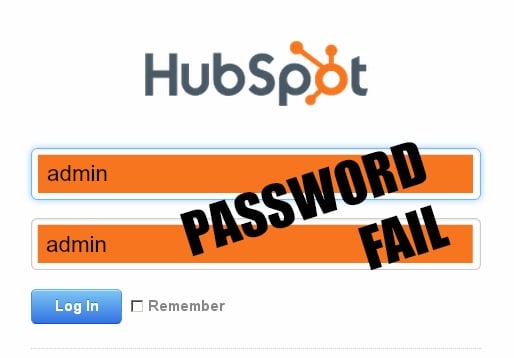A common belief among today’s business leaders is that they have little or no control over their insurance premiums. This couldn’t be farther from the truth. There are sound risk management strategies that you can utilize to lower your costs – both immediately as well as for the long-term.
To create a true strategy, you have to appreciate that your total cost of risk is comprised of much more than your annual premium. It includes deductibles and indirect losses such as downtime, damaged equipment/product, overtime, etc. A solid risk management program becomes even more important in a hard insurance market – and it’s on the way.
The best strategy will vary from business to business. There are three important steps in creating the ideal insurance program:
1. Gain an understanding of your critical risk factors.
2. Determine your level of risk tolerance.
3. Tailor your insurance program to fit your needs.
[But if you’re perfectly content with writing a blank check to your insurance company every year, then read no further.]
1. Identify your critical risk factors.
What are your critical risk factors? Depending on the nature of your business, your critical risk factors are the things you do in the course of your line of work that are most concerning to underwriters.
These are areas that may expose you to catastrophic losses or simply contribute to a frequency of losses. Today, underwriters are scrutinizing your risks more carefully. There may be exposures in your business that do not contribute heavily to your revenue or profit, but create a great concern to underwriters.
Once you identify your critical risk factors, you can start to create a plan to minimize their impact, utilizing three different approaches:
a.) avoid risk
b.) transfer risk
c.) minimize risk with safety efforts
For instance, you may be a contractor that spends 1% of your time on scaffolding, and for that reason an underwriter may elect to pass on quoting your business. If you can avoid such risk factors, you may be able to open up opportunities that will greatly reduce your insurance premium.
Another option is to create a strategic alliance with another company that you may be able to outsource that portion of your business and effectively transfer the risk to others.
Your safety program should address and measure these factors in order to control and prevent future claims. Be aware of all your risk factors and measure them so you can determine areas of improvement.
2. Determine your risk tolerance.
Once you have an understanding of your critical risk factors, you can begin to measure your risk tolerance. In a hard market, it becomes imperative for you to begin retaining a greater portion of your risk.
You can increase your deductibles or self-insure parts of your business. We utilize a four-level risk hierarchy approach that gives companies a perspective on the types of insurance programs available to them and the opportunity to reduce their premiums by increasing their portion of the risk.
The four levels of the risk hierarchy represent different insurance programs that increase in risk at each level: guaranteed cost, insured retention, captive program and self-insurance.
Level 1 - Guaranteed cost:
A guaranteed-cost program is one in which risk is transferred to an insurance company for a specified premium, or “guaranteed cost.” The majority of companies fall into this first level.
Start-up companies and small to mid-size businesses may not have the financial capacity to assume much risk. Transferring risk with a small deductible is a sound approach at this level. As your company grows in financial strength and your ability to tolerate risk increases, deductibles can be increased to reduce insurance premiums.
Level 2 - Insured retention (large deductible):
At this level, you have established a proven safety and loss control program and are financially secure enough to support a loss-sensitive plan.
With an insured retention plan, actual losses impact the total cost of risk more than the insurance premium. As your comfort level grows, you can increase your retention level. With the increase in risk comes the potential for higher returns.
Level 3 - Captive program
A captive is an insurance company established for the purpose of reinsuring the risks of its owners.
While it is true that most companies simply ignore this option by raising their retention level higher and higher until they become qualified to self-insure (Level 4), captives do have some advantages. These may include, among others, providing insurance coverage not otherwise available, allowing for recapture of investment income and gaining greater control of claims handling.
Level 4 - Self-insurance
Self-insurance is the highest level in the risk hierarchy. Companies operating at this level assume 100% of their risk up to a certain threshold (e.g., $1 million).
Excess loss insurance is purchased to protect against a catastrophic loss above the threshold. Loss control and claim handling services are purchased independently. Few companies are able to assume this degree of risk.
While you might find these levels self-explanatory, the distinctions between the levels are not widely understood or appreciated. We find that there may be a greater reliance on insurance market savings than sound risk management principles in a soft market. By clearly understanding the difference between the levels, you will be able to plan more effectively and increase your risk tolerance level.
3. Insurance program adjustments.
The final step in the process is integrating all the knowledge and resources you’ve gained and utilizing it to create the ideal program. You are now in a position to review all the components of your program.
Ensure that limits and coverages are appropriate. In a soft market, underwriters were more willing to throw in additional coverages and limits. However, today those enhancements can be costly. Select the most appropriate plan based on your risk tolerance level. Compare the cost to retain risk vs. insuring your risk.
Perhaps the most difficult decision you will face will be determining your liability limits. The umbrella and excess insurance markets have taken on some of the most significant price increases. Factors you need to consider are: What do my customers require? What is my company’s net worth? What makes me feel comfortable?
This is a personal decision with no precise formula. Making changes or reducing your coverages should only be done after a careful examination with your trusted advisors. This will allow you to effectively create and manage an insurance program that works for you.
.png?width=69&height=53&name=Acrisure%20Logo%20(White%20Horizontal).png)










